Space tourism ticket costs can vary dramatically, but with SIXT.VN, exploring Vietnam doesn’t have to break the bank. We offer affordable travel solutions, from airport transfers to city tours, ensuring you experience the best of Vietnam without the astronomical price tag of space travel. Discover affordable luxury, explore Vietnam travel packages, and enjoy a memorable vacation with ease and convenience.
1. How Did Blue Origin Price New Shepard Tickets in 2021?
In 2021, Blue Origin’s New Shepard ticket prices ranged from $200,000 to $28 million (auction price). Blue Origin’s initial suborbital flight in 2021 garnered significant attention when an auction for the first seat reached $28 million. Subsequent flights were rumored to be priced much lower, around $200,000 to $300,000 per person. The high variation in prices highlights the influence of early demand and exclusivity on costs. As flights become more regular, the price is expected to drop. For potential space tourists, this means that early reservations might come with a premium due to high demand.
2. What Was Virgin Galactic’s Initial Ticket Price for Suborbital Flights in 2021?
Virgin Galactic initially priced suborbital flights at $250,000 per seat in 2021. This price point made space travel accessible to a segment of wealthy adventurers. At $250,000 per seat, Virgin Galactic’s suborbital flights were designed to offer passengers a few minutes in space before returning to Earth. This price was attractive compared to the auction-based pricing of competitors, leading to high demand and quick sell-outs. It also set a benchmark for future suborbital travel, suggesting space travel could eventually become affordable for affluent adventurers.
3. Why Did Virgin Galactic Increase Ticket Prices to $450,000 per Seat in 2022?
Virgin Galactic increased ticket prices to $450,000 per seat in 2022, reflecting rising demand and operational costs. As Virgin Galactic continued to develop its commercial operations, ticket prices significantly increased from the initial $250,000. This jump reflected increased demand and the growing operational costs associated with space travel. For potential travelers, this means that early reservations are beneficial for locking in lower prices. Those who waited to buy tickets saw prices almost double, underscoring the importance of early booking.
4. How Much Did SpaceX’s Crew Dragon Missions with Axiom Space Cost per Seat in 2022?
In 2022, SpaceX’s Crew Dragon missions with Axiom Space cost approximately $55 million per seat, providing a full orbital experience. Unlike suborbital flights, SpaceX’s Crew Dragon missions offered a more extensive orbital experience. Axiom Space, in collaboration with SpaceX, charged about $55 million per seat for private missions to the International Space Station (ISS). This price reflected the complexity of the mission, which allowed passengers to spend days in orbit, experiencing what professional astronauts do. While out of reach for most people, it was a historic step toward making long-term space travel a possibility.
5. What Was the Estimated Cost of SpaceX’s All-Civilian Inspiration4 Mission in 2021?
The estimated cost of SpaceX’s all-civilian Inspiration4 mission in 2021 was $200 million for four passengers. Sponsored by billionaire Jared Isaacman, the Inspiration4 mission sent four civilians into orbit aboard a SpaceX Crew Dragon. The entire mission was estimated to cost around $200 million, covering training, spacecraft, and mission expenses. This mission demonstrated the feasibility of private spaceflight and the willingness of wealthy individuals to fund trips for non-professional astronauts. Large-scale sponsorships could potentially help reduce costs in the future.
6. What Were Axiom Space’s Plans for Private Missions to the ISS and Their Pricing?
Axiom Space announced plans to charge around $55-60 million per passenger for private missions to the ISS. Axiom Space aimed to make private ISS missions a regular occurrence, with each ticket costing around $55-60 million. This price covered the journey, a stay on the ISS, and the return trip. For those with significant wealth, this price was within reach, but for space tourism to grow, these costs must decrease. Companies are already working on cheaper alternatives, such as private space stations and shorter orbital flights.
7. What Was Space Perspective’s Proposed Price for High-Altitude Balloon Rides in 2022?
In 2022, Space Perspective planned to offer high-altitude balloon rides for $125,000 per seat, offering a more affordable alternative to rocket flights. This company proposed a more affordable option at $125,000 per seat, offering breathtaking views of Earth from the stratosphere. This option provides a space-like experience without the high costs of an orbital trip.
8. What is the Estimated Cost of SpaceX’s Polaris Dawn Mission, Scheduled for 2024?
SpaceX’s Polaris Dawn mission, scheduled for 2024, is estimated to cost over $50 million per seat, representing a new era in private space missions. This mission is designed to push the boundaries of commercial space travel, targeting the highest Earth orbit achieved by a crewed mission since the Apollo era. The mission includes advanced experiments, spacewalks, and technology testing crucial for future Mars missions. For businesses looking at space opportunities, Polaris Dawn signals a shift towards sustainable commercial activities in orbit and beyond.
9. How Did the Winning Bid for Blue Origin’s First Commercial Flight in 2021 Impact Perceptions of Space Tourism Costs?
The first Blue Origin ticket went for $28 million at auction, demonstrating the extreme demand for early flights. While later seats were significantly cheaper, this event highlighted how much people are willing to pay for exclusivity. Those considering space tourism should note that early participation in a company’s ticket sales can sometimes yield better deals. As demand stabilizes, prices should become more predictable.
10. What Did Virgin Galactic’s Ticket Reservation Numbers Indicate About the Demand for Space Travel by 2022?
Virgin Galactic reported over 800 ticket reservations by 2022 for future flights, demonstrating a strong and growing demand for space travel. With ticket prices ranging from $200,000 in the early days to the current $450,000 per seat, this level of interest proves that there’s a market willing to pay a premium for the experience of weightlessness and a view of Earth from the edge of space. This indicates a thriving future for space tourism and encourages companies to invest in space-related ventures.
11. What Was Significant About Blue Origin’s $100 Million in Ticket Sales as of 2022?
As of 2022, Jeff Bezos’ Blue Origin had sold more than $100 million in tickets, signifying a game-changer in the commercial space race. This milestone signaled that private space travel is no longer a speculative venture but an established market with real consumer demand. By successfully launching multiple civilian crews aboard the New Shepard rocket, Blue Origin has proven that suborbital space tourism is not only possible but also commercially viable, attracting businesses and investors to the rapidly expanding space economy.
12. How is SpaceX’s Private Moon Mission with Yusaku Maezawa Shaping the Future of Space Tourism?
SpaceX’s private moon mission with Yusaku Maezawa is estimated to cost several hundred million dollars, marking the dawn of lunar tourism. This mission aims to send a private citizen and a crew of artists, creators, and innovators around the Moon, setting a precedent for how private missions could contribute to culture, science, and business. This is not just space tourism but an entirely new category of space experience, moving beyond adventure and luxury into exploration and creativity.
13. What Did Axiom Space’s First Fully Private ISS Mission in 2022 Demonstrate About the Commercial Potential of Space?
Axiom Space’s first fully private ISS mission in 2022 cost approximately $55 million per astronaut, showcasing the rise of private space stations. This mission validated the idea that private individuals and businesses are willing to invest heavily in space-based experiences, research, and branding opportunities. It marked the beginning of commercial research, media production, and private-sector innovation in low Earth orbit, offering an extended stay aboard the ISS, previously reserved for government astronauts.
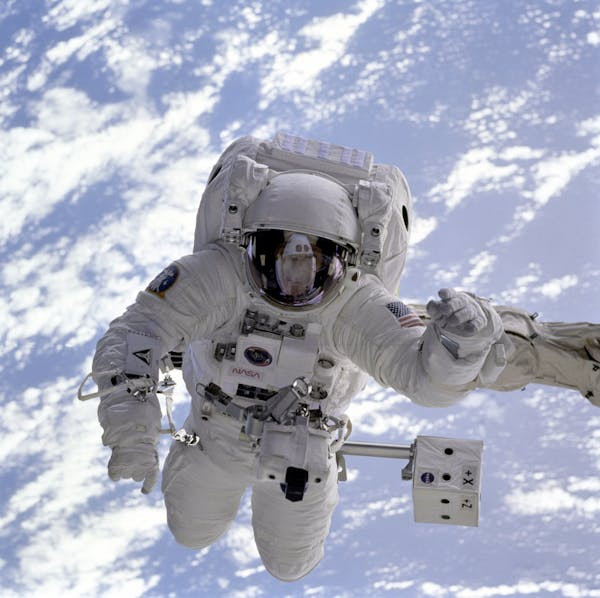 Axiom Space’s first fully private ISS mission in 2022 cost approximately million per astronaut, showcasing the rise of private space stations.
Axiom Space’s first fully private ISS mission in 2022 cost approximately million per astronaut, showcasing the rise of private space stations.
14. What are SpaceX Starship’s Projected Ticket Prices by 2030, and What Does This Imply for Space Travel?
SpaceX Starship’s estimated future ticket prices are projected to be under $10 million per seat by 2030, signifying the race to lower the cost of spaceflight. Starship is set to redefine what is possible in commercial spaceflight, aiming to make space travel as routine as air travel. Designed for mass access, its fully reusable architecture aims to drastically reduce costs, making orbital and lunar missions more accessible to private individuals, researchers, and businesses alike.
15. How Did Roscosmos’ ISS Trip Pricing in 2022 Compare to Private Companies?
In 2022, Roscosmos charged around $35 million per seat for a trip to the ISS, which was more competitive than some private companies. While still incredibly high, this price was lower than what other companies like Axiom Space and SpaceX were charging. Roscosmos has been sending private astronauts to the ISS since the early 2000s. Government-backed space travel can sometimes offer more competitive rates than private companies, though the level of training and experience provided may differ.
16. How Have Space Tourism Costs Changed Since Dennis Tito’s First ISS Trip in 2001?
Dennis Tito, the first space tourist (2001), paid $20 million for his ISS trip, while modern space tourists pay at least double that, indicating an increase in pricing. While costs were lower two decades ago, inflation, advancements in technology, and increasing demand have driven prices higher. As more companies enter the market, we might see a return to prices closer to Tito’s original $20 million—or even lower.
17. How Did NASA’s Pricing Guidelines in the 2020s Estimate the Cost of Private Astronaut Missions to the ISS?
NASA estimated private astronaut missions to the ISS would cost around $50 million per person in the 2020s, aligning with the pricing of companies like Axiom Space and Roscosmos. This pricing includes training, transportation, and accommodations aboard the ISS, making it one of the most immersive space tourism experiences available. However, for most people, this is still out of reach financially. Private space stations could potentially drive these prices down in the late 2020s.
18. What are the Goals and Estimated Costs of the SpaceX DearMoon Project?
The SpaceX DearMoon project aims to carry passengers around the Moon, with estimated costs exceeding $1 billion for the mission, representing the pinnacle of space tourism. This mission will venture deep into space, providing an experience few humans have ever had, and is a long-term investment that could gradually decrease the cost of space travel beyond Earth orbit.
19. What are Sierra Space’s Plans for Commercial Space Travel with Dream Chaser, and What are the Projected Ticket Costs?
Sierra Space’s Dream Chaser aims to provide commercial space travel, with potential ticket costs projected at $50 million per seat by the late 2020s. Targeting the same high-end market as SpaceX and Axiom, competition among these players could help bring down costs over time. For travelers, this means more choices and potential for innovation and affordability.
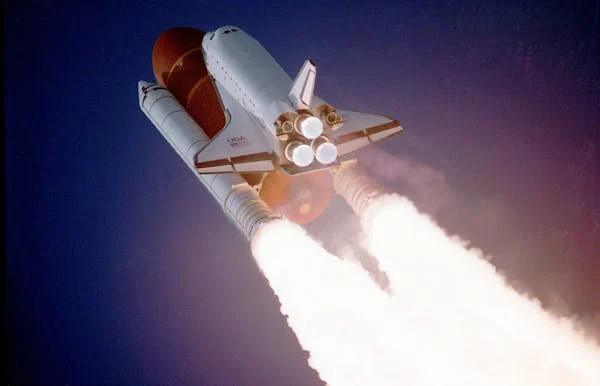 For travelers, this means more choices. Unlike the early days of space tourism, where Roscosmos was the only option, the late 2020s will feature multiple companies competing for customers. This competition will likely drive innovation and affordability.
For travelers, this means more choices. Unlike the early days of space tourism, where Roscosmos was the only option, the late 2020s will feature multiple companies competing for customers. This competition will likely drive innovation and affordability.
20. What are the Plans for Space Hotels, Like the One Proposed by Orbital Assembly Corporation, and What are the Potential Travel Costs?
In 2022, Orbital Assembly Corporation announced plans for a space hotel with potential travel costs of several million per visitor, focusing on extended stays in space. Designed for comfort and luxury, guests would experience microgravity while enjoying amenities similar to those found in high-end hotels. If space hotels become operational, they could push down the cost of orbital stays and make longer space trips more viable for affluent travelers.
21. How Does Blue Origin’s Suborbital Flight Cost Translate to Cost Per Second of Spaceflight?
Blue Origin’s suborbital flight costs are estimated to be over $450 per second of spaceflight, highlighting the premium cost of space tourism. With flights lasting just 10 minutes, the cost translates to a substantial amount per second, emphasizing the need to consider whether the price justifies the experience.
22. What Insights Can Be Gained from NASA’s Pricing Guidelines for a Stay Aboard the ISS?
In 2022, NASA’s pricing guidelines indicated a stay aboard the ISS would cost about $35,000 per night, offering insight into future space hotels. Commercial space hotels might offer stays for a similar or slightly higher price in the future, providing a benchmark for potential costs.
23. How is Competition Expected to Affect Suborbital Space Tourism Ticket Prices by 2025?
By 2025, competition is expected to drive suborbital space tourism ticket prices below $200,000, making space tourism accessible to a broader audience. This shift could include wealthy professionals rather than just multimillionaires, as more companies enter the market and offer competitive pricing.
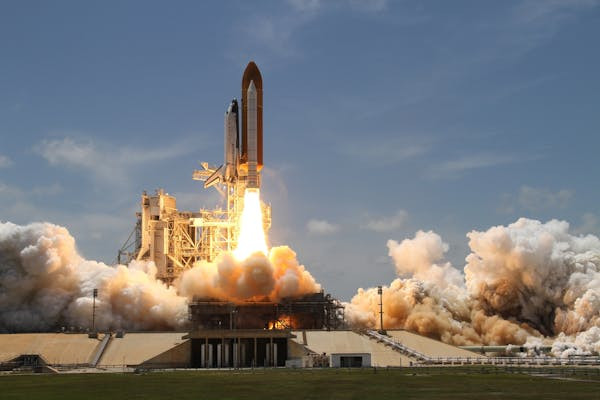 This shift would make space tourism accessible to a broader audience, possibly including wealthy professionals rather than just multimillionaires.
This shift would make space tourism accessible to a broader audience, possibly including wealthy professionals rather than just multimillionaires.
24. How Could Stratospheric Balloon Tourism Lower Costs Compared to Traditional Space Tourism by 2030?
Stratospheric balloon tourism, such as World View, could lower costs to around $50,000 per seat by 2030, offering a budget-friendly alternative. This approach provides near-space experiences without the need for rockets, making it a more sustainable and cost-effective option for those who want to see the curvature of Earth.
25. What are SpaceX’s Long-Term Goals for Reducing Ticket Prices for Mars Missions?
SpaceX’s long-term goal is to reduce ticket prices for Mars missions to as low as $100,000 per person, representing one of the most ambitious plans in space travel history. If achieved, this could make interplanetary travel possible for upper-middle-class individuals rather than just billionaires, marking a massive shift in affordability.
26. What Remains the Average Price for Private Orbital Missions Between 2020-2025?
The average price for private orbital missions between 2020-2025 remains around $50 million per seat, reflecting the extensive training, higher risks, and complex logistics of sending civilians into orbit. These missions, unlike suborbital flights, require advanced life support systems and extensive preparation. Increased competition from companies like SpaceX, Axiom Space, and Sierra Space could potentially drive costs down in the future.
27. How Might High-Frequency Space Tourism Flights Impact Suborbital Ticket Costs by 2030?
By 2030, high-frequency space tourism flights may bring suborbital ticket costs down to $100,000 per person, making space tourism more accessible. As technology matures and flight frequency increases, costs are expected to decrease, marking a significant milestone.
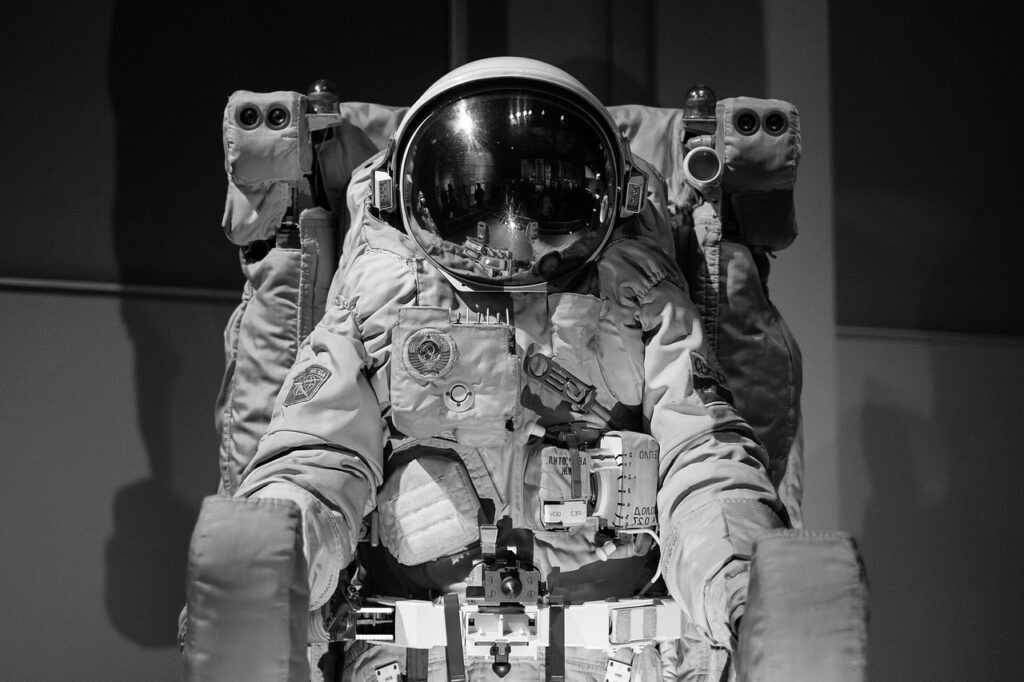 For those who are interested in suborbital tourism but find today’s prices too steep, patience may be the best strategy. As more flights take off and companies refine their operations, expect to see significant cost reductions over the next several years.
For those who are interested in suborbital tourism but find today’s prices too steep, patience may be the best strategy. As more flights take off and companies refine their operations, expect to see significant cost reductions over the next several years.
28. What is Blue Origin’s Expected Pricing Strategy for Suborbital Flights Throughout the 2020s?
Blue Origin’s suborbital flight costs are estimated to remain between $200,000 and $500,000 throughout the 2020s, due to the costs associated with maintaining and operating the New Shepard rocket. While some experts predict that space tourism will become cheaper, Blue Origin’s brand reputation and premium experience may justify keeping prices high for those who want a more exclusive journey to space.
29. What are Virgin Galactic’s Plans for Commercial Operations and Potential Price Reductions by 2026?
Virgin Galactic aims for commercial operations at full scale by 2026, possibly reducing prices to $200,000 per seat, promising potential space tourists that costs may decrease before making the investment. Economies of scale could reduce per-seat costs, making space travel more accessible to a wider audience.
30. What is the Predicted Growth of the Global Space Tourism Market by 2030, and What Factors Will Drive This Growth?
Analysts predict the global space tourism market could reach $3 billion annually by 2030, driven by declining ticket prices, technological advancements, and increased competition. Space tourism could transition from being a billionaire’s pastime to an industry with a broader customer base, as more companies enter the market and improve efficiency.
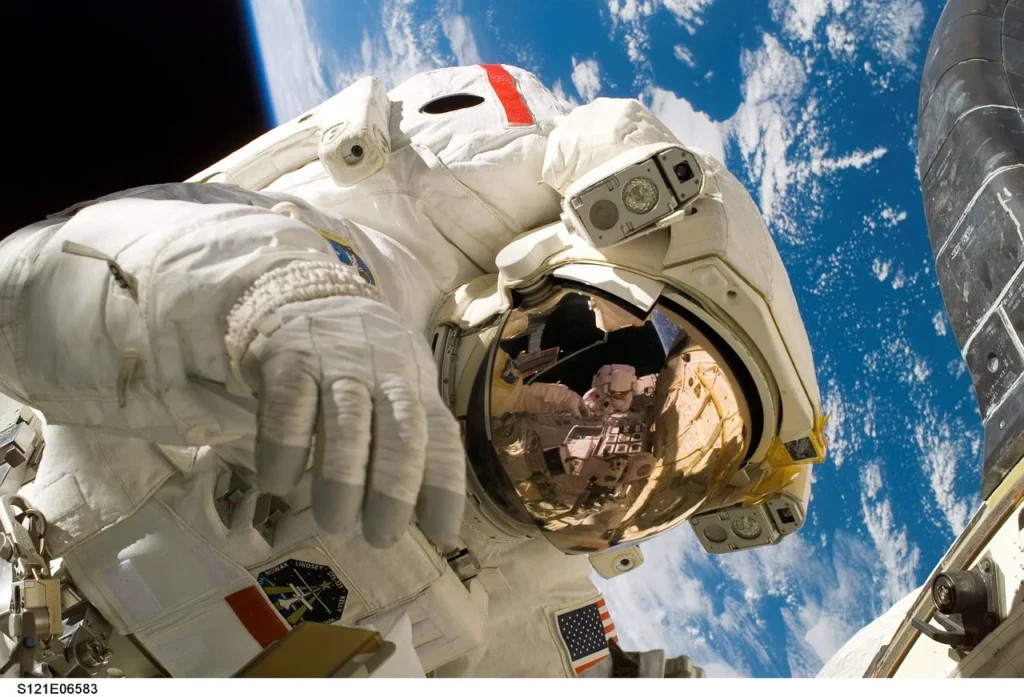 For those interested in space tourism, this market growth is an encouraging sign. Whether your goal is a brief suborbital experience or a multi-day orbital mission, the coming decade will likely bring more opportunities to explore space at lower costs.
For those interested in space tourism, this market growth is an encouraging sign. Whether your goal is a brief suborbital experience or a multi-day orbital mission, the coming decade will likely bring more opportunities to explore space at lower costs.
FAQ About Space Tourism Ticket Costs
-
What factors influence the cost of a space tourism ticket?
Several factors influence the cost of a space tourism ticket, including the type of flight (suborbital vs. orbital), the duration of the trip, the company providing the service, and the level of exclusivity and demand. Technological advancements, competition, and flight frequency also play significant roles in determining ticket prices. -
How much does a suborbital spaceflight cost?
Suborbital spaceflights currently range from $200,000 to $450,000 per seat, depending on the provider. These flights offer a few minutes of weightlessness and a view of Earth from the edge of space. -
How much does an orbital spaceflight to the International Space Station (ISS) cost?
Orbital spaceflights to the ISS can cost between $35 million and $60 million per seat, depending on the provider. These flights offer an extended stay in space and the opportunity to experience what professional astronauts do. -
Are there any more affordable alternatives to traditional rocket-based space tourism?
Yes, stratospheric balloon tourism offers a more affordable alternative, with prices around $50,000 per seat. These flights provide breathtaking views of Earth from the stratosphere without the need for rockets. -
What are the long-term predictions for space tourism ticket prices?
Experts predict that suborbital ticket prices may drop below $200,000 by 2025 and potentially to $100,000 by 2030 as competition increases. SpaceX aims to reduce Mars mission costs to as low as $100,000 per person in the future. -
Which companies currently offer space tourism flights?
Companies currently offering or planning to offer space tourism flights include Blue Origin, Virgin Galactic, SpaceX, Axiom Space, Space Perspective, and Sierra Space. -
How can I stay updated on the latest developments in space tourism pricing and availability?
You can stay updated by following news from reputable sources in the space industry, monitoring company announcements, and consulting with space tourism agencies. -
Is there a market for commercial space tourism?
Yes, there is a growing market for commercial space tourism. As more companies enter the market and costs decline, the space tourism industry is predicted to reach $3 billion annually by 2030. -
What are the key differences between suborbital and orbital spaceflights in terms of cost and experience?
Suborbital flights are shorter, lasting only a few minutes, and are less expensive, costing between $200,000 and $450,000. Orbital flights are longer, lasting days or weeks, and offer an immersive experience aboard the ISS, but they are significantly more expensive, costing between $35 million and $60 million. -
How does Vietnam fit into this picture?
While space tourism remains exclusive, SIXT.VN makes exploring Vietnam accessible. We offer affordable travel solutions, from airport transfers to city tours, ensuring you experience the best of Vietnam without the astronomical price tag of space travel.
Explore Vietnam with SIXT.VN
While the Cost Of Space Tourism Tickets remains out of reach for most, you can still embark on an extraordinary adventure right here on Earth. With SIXT.VN, discover the beauty and culture of Vietnam through our comprehensive travel services. We provide everything you need for a seamless and memorable trip, including:
-
Affordable Airport Transfers: Start your journey stress-free with our reliable and cost-effective airport transfer services.
-
Comfortable Hotel Bookings: Choose from a wide range of hotels to suit your budget and preferences.
-
Exciting City Tours: Explore the vibrant cities of Vietnam with our guided tours, uncovering hidden gems and iconic landmarks.
-
Convenient Car Rentals: Enjoy the freedom to explore at your own pace with our car rental options, perfect for discovering Vietnam’s scenic routes.
Don’t let the high cost of space travel hold you back from experiencing adventure. Contact SIXT.VN today to plan your unforgettable trip to Vietnam. Visit our website or call +84 986 244 358 to learn more about our travel packages and services. Your dream vacation awaits! Address: 260 Cau Giay, Hanoi, Vietnam. Website: SIXT.VN.



